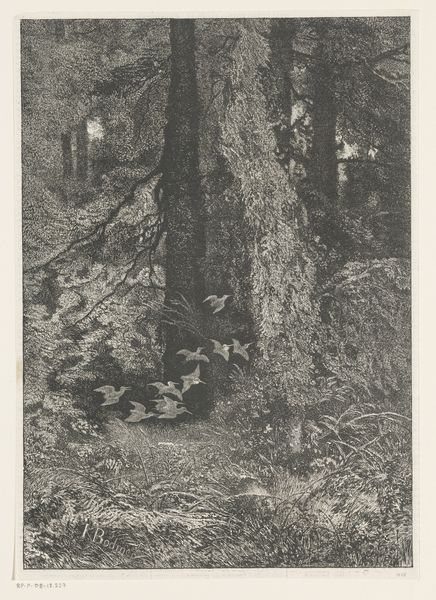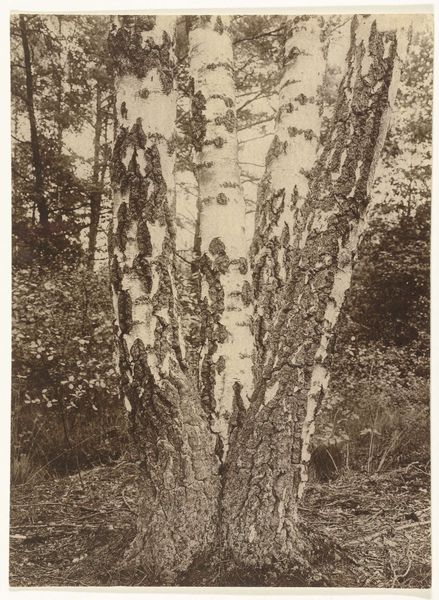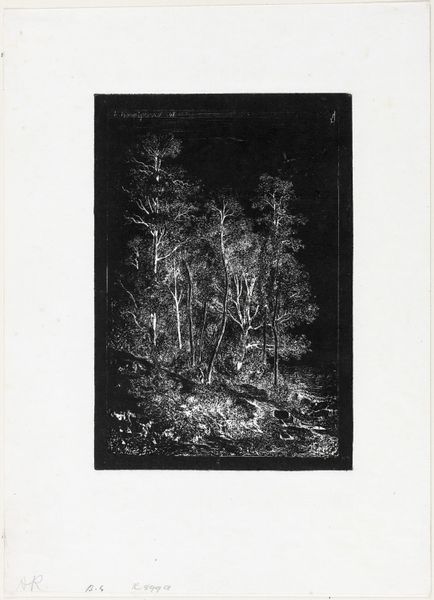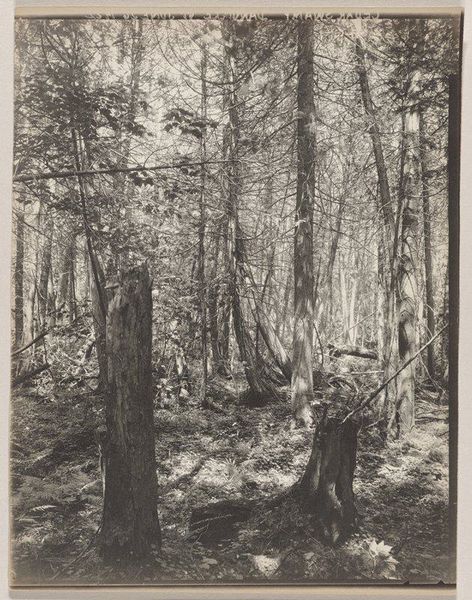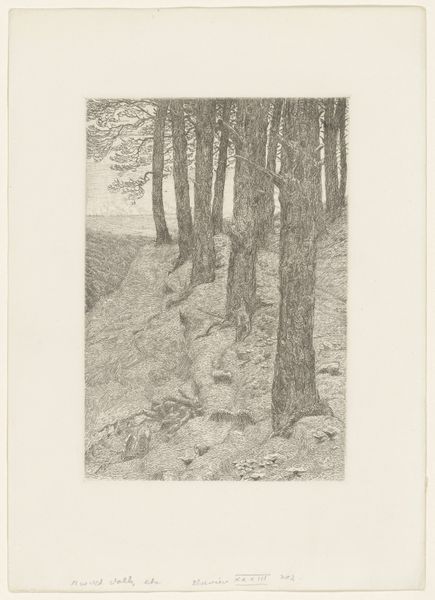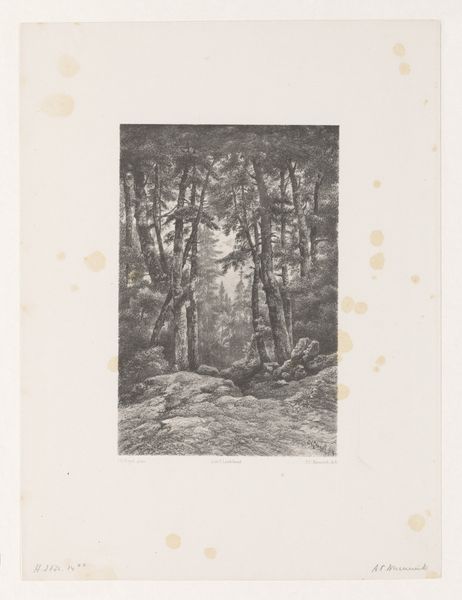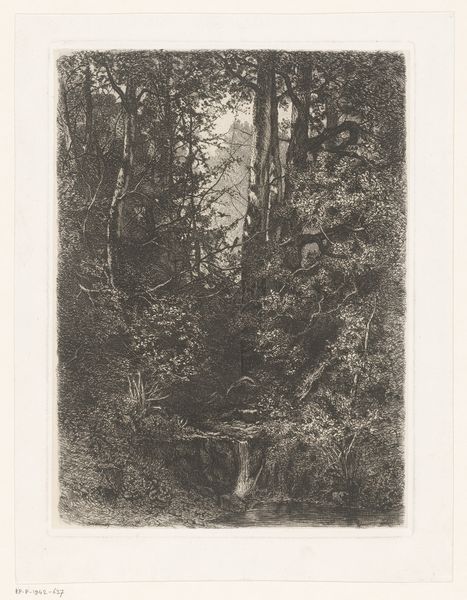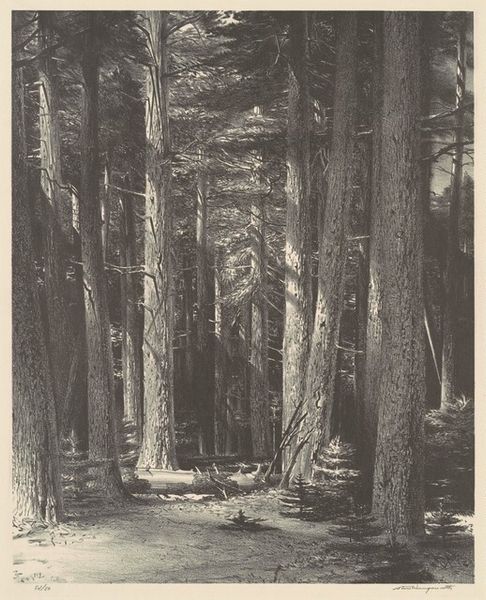
Dimensions: height 378 mm, width 200 mm
Copyright: Rijks Museum: Open Domain
Editor: So, here we have "Sequoia Boom," an etching from 1915 by Ernest Haskell. The sheer size of these trees is just astounding! I feel dwarfed just looking at them. What's your take on this scene? Curator: Well, this image transports us to a specific historical moment in American conservation. Etchings like these gained popularity in the early 20th century, serving a crucial public role. What strikes me is Haskell's choice to depict the sequoias. Consider the socio-political context: This was during the rise of the conservation movement. How do you think that influenced Haskell's depiction? Editor: I hadn't considered that aspect! I guess these images really brought awareness and encouraged a reverence for nature and its preservation? Curator: Precisely! Think about the intended audience, those viewing it in galleries or homes. These etchings become accessible tools for fostering a shared appreciation for landscapes threatened by logging. The meticulous detail emphasizes the value and magnificence of these giants. The very act of representing it changes our understanding of the natural world. It is less of a resource, and more of a public good. How does this affect how you now view the composition? Editor: Now, looking at the detailed lines creating the bark and the way they seem to reach to the sky...it’s like Haskell’s making an argument, not just a picture. Curator: Exactly. By presenting the Sequoia as almost a spiritual icon, Haskell tapped into something quite powerful. Hopefully, we understand the visual rhetoric behind seemingly objective depictions of nature and landscape. Editor: I never really considered the politics of landscape art. It's more than just pretty scenery! Thank you for that.
Comments
No comments
Be the first to comment and join the conversation on the ultimate creative platform.
